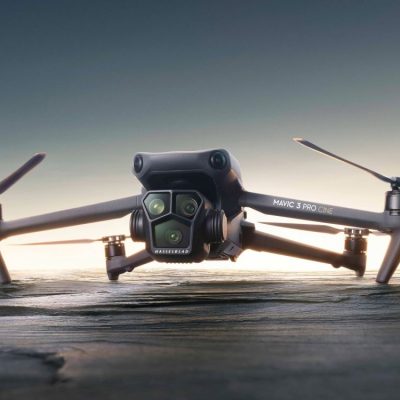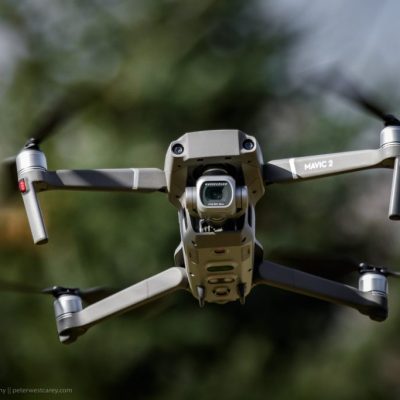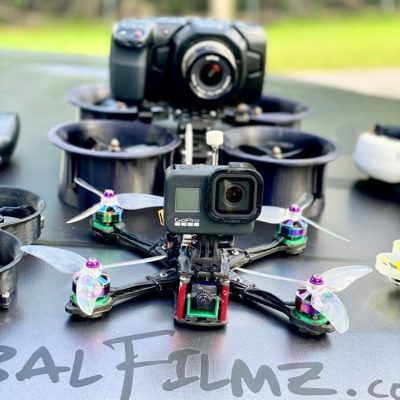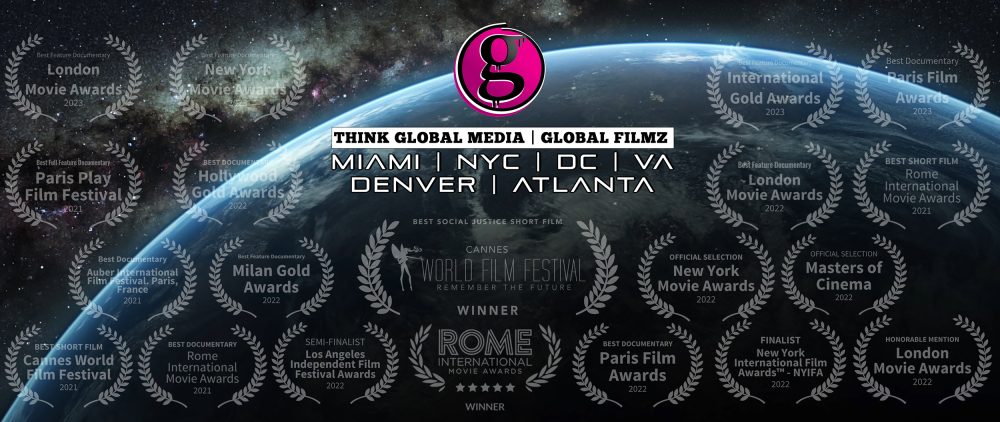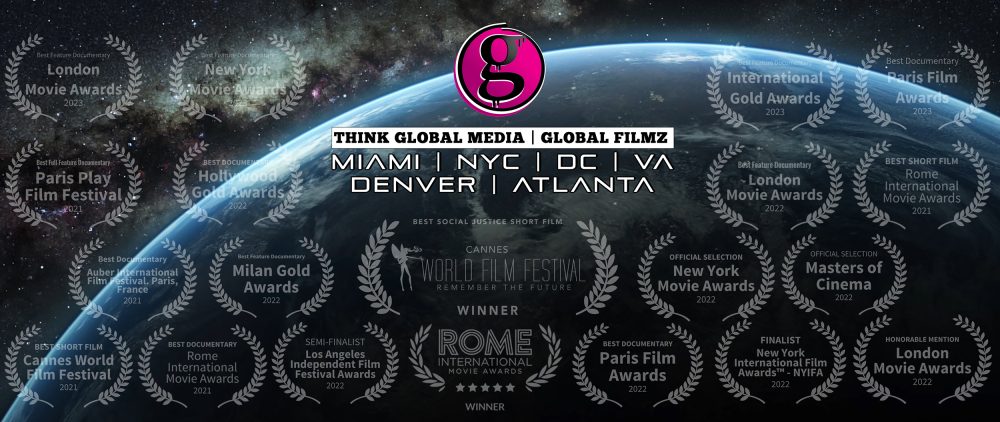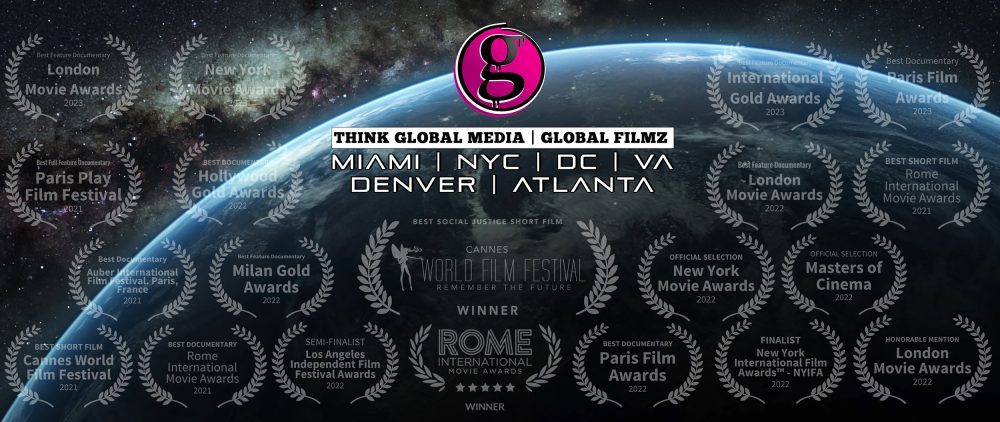
Music Video Production Company – Denver Colorado
Music Video Production Company – Denver Colorado
Also offering music video production services in Boulder, Aspen, Breckenridge and Colorado Springs
How long does it take to produce a music video production?
Creating a music video is an exciting and creative process that involves several stages, each contributing to the final product’s quality and impact. The time it takes to make a music video can vary significantly depending on various factors such as the complexity of the video, production scale, resources available, and the production team’s efficiency. In this guide, we’ll explore the typical timeline and stages involved in making a music video, from pre-production to post-production. Read More
- Pre-Production (1-4 Weeks): The pre-production phase is where the initial planning and preparation for the music video take place. This stage can last anywhere from one to four weeks, depending on the video’s complexity and the availability of resources. During pre-production, tasks include concept development, scriptwriting (if applicable), storyboard creation, location scouting, casting, scheduling, and budgeting. The production team collaborates closely with the artist or band to align on the video’s concept, themes, and creative vision.
- Production (1-3 Days – 2 Weeks): The production phase is where the actual filming of the music video takes place. This stage can range from one to three days for simpler videos to up to two weeks for more elaborate productions. During production, the crew sets up equipment, captures footage according to the storyboard and script, directs performances, and manages logistics on set. The length of the production phase depends on factors such as the number of locations, complexity of scenes, number of shots, and the availability of talent and crew.
- Post-Production (7-10 days): Post-production is the phase where the raw footage is edited, refined, and polished to create the final music video. This stage typically lasts between 7 to 10 days, although it can be longer for videos with complex visual effects or extensive editing requirements. Tasks in post-production include video editing, color grading, audio mixing, adding visual effects, creating graphics and animations, and finalizing the overall look and feel of the video. Editors work closely with the artist or band to incorporate feedback and revisions to achieve the desired outcome.
- Review and Approval (1-2 Weeks): After the initial post-production work is complete, the music video undergoes a review and approval process. This stage typically lasts one to two weeks, during which the artist or band, along with the production team, review the video for accuracy, coherence, and alignment with the creative vision. Feedback is incorporated, revisions are made as necessary, and final approval is obtained before the video is ready for release.
- Distribution and Promotion (Ongoing): Once the music video is finalized and approved, it is ready for distribution and promotion. This stage involves uploading the video to online platforms such as YouTube, Vevo, Vimeo, and social media channels. Promotion efforts may include teaser trailers, behind-the-scenes content, interviews, social media marketing, and collaborations with influencers or media outlets. The distribution and promotion phase is ongoing and continues after the video’s release to maximize visibility, engagement, and reach among the target audience.
Overall, the time it takes to make a music video can range from a few weeks to a few months, depending on the project’s complexity and scope. Effective planning, communication, collaboration, and efficient workflow management are key factors in ensuring that the production process stays on schedule and delivers a high-quality music video that meets artistic, creative, and promotional objectives.
Completed Projects
Years of Experience
Countries Serviced
Serviced Cities
MUSIC VIDEO PRODUCTION RECAP
2023
2021
2020
2019
2018
2018
2017
MUSIC VIDEO PRODUCTION
MUSICAL ARTISTS LOOKING TO PRODUCE A MUSIC VIDEO? WE ARE A MIAMI BASED FULL SERVICE VIDEO PRODUCTION COMPANY, EQUIPPED WITH STATE OF THE ART SMART STUDIO / FILM SETS WHICH ARE PERFECT FOR CREATING A CONTROLLED ENVIRONMENT WHEN NECESSARY OR OUR FILM CREW CAN TAKE THE PRODUCTION TO THE STREETS/BEACHES OF MIAMI.
More Music Videos…(Click here)
Think Global Media’s Exceptional Music Video Production Services
In today’s fast-paced digital age, music videos have become an indispensable tool for artists to captivate their audiences and convey their artistic vision. Think Global Media, a leading production company, offers unparalleled music video production services that combine creativity, technical expertise, and a deep understanding of the power of visual storytelling. In this article, we will explore the key aspects of Think Global Media’s services, highlighting their commitment to delivering exceptional results and helping artists bring their music to life in a visually stunning and engaging way. Read More
I. Understanding the Art of Visual Storytelling Through a Music Video:
At the heart of Think Global Media’s music video production services lies a profound understanding of the art of visual storytelling. Our team of talented directors, cinematographers, and editors collaborate closely with artists to conceptualize and execute music videos that not only complement the music but also enhance its emotional impact. By carefully considering the song’s message, genre, and target audience, We ensure that every frame of the music video aligns seamlessly with the artist’s vision.
II. A Holistic Approach to Music Video Production:
Think Global Media takes a comprehensive approach to music video production, providing artists with end-to-end services that cover every aspect of the creative process. From initial brainstorming sessions and storyboard development to casting, location scouting, and post-production, our team handles every step with meticulous attention to detail. By offering a one-stop solution, we alleviate the burden on artists, allowing them to focus on their music while leaving the visual storytelling in expert hands.
III. Cutting-Edge Music Video Production Equipment and Technology:
To deliver visually stunning music videos, Think Global Media constantly invests in state-of-the-art equipment and embraces the latest technological advancements. Their team utilizes high-resolution cameras, lighting rigs, and professional-grade audio equipment to capture every intricate detail of the artist’s performance. Moreover, they leverage advanced post-production software and visual effects to add a touch of magic and bring the artist’s imagination to life. By staying at the forefront of technological advancements, Think Global Media ensures that the music videos they produce are of the highest quality and stand out in today’s saturated digital landscape.
IV. Tailored Solutions for Every Music Video Budget:
Think Global Media understands that artists have diverse budgets, and they believe that creativity should not be limited by financial constraints. Whether working with emerging artists or established musicians, we offer flexible packages that can be customized to fit various budget requirements. By leveraging our vast network of industry professionals and our ability to maximize resources efficiently, Think Global Media delivers exceptional results while providing cost-effective solutions tailored to each artist’s unique needs.
In the realm of music video production, Think Global Media stands out as a creative powerhouse, dedicated to helping artists unleash the full potential of their music through the art of visual storytelling. With our unwavering commitment to excellence, holistic approach to production, cutting-edge equipment, and tailored solutions, Think Global Media is a trusted partner for artists seeking to create captivating and memorable music videos. By collaborating with Think Global Media, artists can confidently embark on a creative journey that will elevate their music and engage audiences on a global scale.
There are various types of music videos, each with its own unique style and purpose. Here are five common types:
1. Narrative Music Videos:
Narrative music videos tell a story, often following a linear narrative structure. They feature characters, plotlines, and sometimes dialogue, creating a visual storyline that complements the song’s lyrics or themes. These videos can be cinematic and dramatic, bringing the song’s message to life through storytelling.
2. Performance Music Videos:
Performance music videos primarily focus on showcasing the artist or band performing the song. They often feature live footage of the artist or a staged performance in various locations, such as a concert venue or a studio. Performance videos aim to capture the energy and charisma of the artist’s live performance, allowing viewers to experience the music in a more dynamic way.
3. Conceptual or Abstract Music Videos:
Conceptual or abstract music videos are artistic and visually engaging, often using symbolism, metaphor, and experimental techniques. These videos may not have a clear narrative or direct connection to the song’s lyrics, but they evoke emotions, provoke thought, and leave room for interpretation. They explore creative concepts and aesthetics, pushing the boundaries of traditional music video conventions.
4. Animated Music Videos:
Animated music videos utilize various animation techniques, such as traditional hand-drawn animation, computer-generated imagery (CGI), or stop-motion animation. These videos offer a vast range of artistic possibilities, allowing for imaginative storytelling and captivating visuals. Animated music videos can be whimsical, abstract, or highly detailed, adding a visual layer that enhances the song’s impact.
5. Concert or Live Performance Videos:
Concert or live performance videos are recordings of a live performance by the artist or band. These videos capture the energy and atmosphere of a live show, providing viewers with an immersive experience. They showcase the artist’s stage presence, interaction with the audience, and the excitement of a live concert. Concert videos are often used to promote tours, highlight memorable performances, or offer fans a taste of the live experience.
The Steps to a Successful Live Music Video Production
Live music videos have become increasingly popular in recent years, offering a unique and immersive experience for viewers. Capturing the energy and magic of a live performance requires careful planning, coordination, and technical expertise. In this article, we will outline the essential steps involved in producing a successful live music video, from pre-production to post-production, ensuring that you can create a captivating visual representation of your music.
1. Live Music Video Pre-production:
The first step in any live music video production is pre-production. This stage involves careful planning and organization to ensure that all aspects of the shoot are well thought out. Key tasks during pre-production include:
a. Concept Development: Work closely with your director and creative team to develop a concept that aligns with your music and vision. Consider the tone, mood, and overall aesthetic you want to convey.
b. Location Scouting: Find the right venue or locations that complement your music and concept. Consider factors such as acoustics, lighting, and audience capacity.
c. Production Schedule: Create a detailed schedule that outlines the shoot day, including setup, soundchecks, and performance times. This ensures that everyone involved knows their roles and responsibilities.
d. Technical Requirements: Determine the technical requirements for the shoot, including camera equipment, lighting, audio setup, and any additional visual effects or special equipment needed.
2. Live Music Video Production:
Once pre-production is complete, it’s time to move into the production phase. This is where all the planning comes together, and the actual filming takes place. Key considerations during production include:
a. Set Design and Lighting: Work with a production designer to create an appealing set design that enhances the visual impact of your performance. Coordinate with the lighting team to ensure proper illumination and ambiance.
b. Camera Setup: Position multiple cameras strategically to capture different angles and perspectives of the performance. This allows for dynamic and engaging footage during the editing process.
c. Audio Recording: Use high-quality audio recording equipment to capture the live sound. It’s crucial to capture clean and balanced audio to complement the visuals.
d. Performance Direction: Work closely with the director to ensure that the performance is captured in a way that translates the energy of the live experience onto the screen. Coordinate with the artists and performers to capture their best performances.
3. Live Music Video Post-production:
After the shoot, post-production begins. This is where all the raw footage is transformed into a polished and cohesive music video. Key steps in post-production include:
a. Video Editing: Select the best shots and arrange them in a logical sequence that matches the flow of the music. Add transitions, effects, and color grading to enhance the visual appeal.
b. Audio Mixing and Mastering: Clean up and mix the recorded audio to ensure optimal clarity and balance. Master the final audio to ensure it sounds professional and complements the visuals.
c. Visual Effects: Add any necessary visual effects or animations to enhance the overall visual experience. This can include overlays, text, or graphic elements that help tell the story or convey the mood.
d. Final Touches: Review the video multiple times to ensure it meets your vision. Make any necessary tweaks and adjustments to achieve the desired outcome.
Producing a live music video requires careful planning, coordination, and technical expertise. By following the essential steps of pre-production, production, and post-production, you can create a captivating and visually stunning music video that captures the essence of your live performance. Remember to collaborate closely with your creative team, maintain open communication, and pay attention to the details. With proper execution, your live music video will leave a lasting impression on your audience and help promote your music to a wider audience.
It’s important to note that these categories are not mutually exclusive, and many music videos may incorporate elements from multiple types. The choice of music video style depends on the artist’s vision, the song’s themes, and the desired impact on the audience.
Choosing a Music Videographer Near You?
When it comes to bringing your music to life through a captivating visual medium, choosing the right music videographer is crucial. The videographer you select will play a significant role in capturing your artistic vision and ensuring that your music video resonates with your audience. In this article, we will provide you with a comprehensive guide on how to choose a music videographer near you, ensuring that you find the perfect match for your project. Read More
1. Define Your Vision:
Before you start searching for a music videographer, it is essential to have a clear understanding of your vision for the video. Consider the style, mood, and message you want to convey through your music video. Are you looking for a cinematic approach or a more experimental and artistic style? Defining your vision will help you communicate your expectations to potential videographers and ensure that they align with your creative goals.
2. Research and Explore:
Start your search by researching and exploring music videographers in your local area. Utilize search engines, social media platforms, and online directories to find professionals who specialize in music video production. Look for portfolios, showreels, and previous work examples to assess their style and quality. Pay attention to the range of genres they have worked with and see if their previous work aligns with your artistic vision.
3. Check Music Videographer’s Reviews and Testimonials:
Client reviews and testimonials are valuable sources of information when choosing a music videographer. Look for feedback from previous clients to get an idea of their professionalism, communication skills, and ability to meet deadlines. Reading reviews can provide insights into their creative process, problem-solving skills, and overall satisfaction of their past clients. Consider both positive and negative reviews to gain a well-rounded view of the videographer’s strengths and weaknesses.
4. Assess Music Videographer’s Technical Expertise:
Technical expertise is crucial when it comes to producing high-quality music videos. Look for videographers who have a solid understanding of camera equipment, lighting techniques, and post-production processes. Consider their experience in handling different types of cameras, lenses, and lighting setups to ensure they can achieve the desired visual style for your music video. Additionally, inquire about their knowledge of editing software and their ability to create polished and professional-looking videos.
5. Review Music Videographer’s Creativity and Artistic Style:
Each videographer has a unique artistic style and creative approach. Review their portfolios and previous work to assess their creativity and ability to bring a unique perspective to their projects. Look for videographers who can elevate your music video by offering innovative ideas, storytelling techniques, and visually captivating shots. A videographer with a creative mindset can help make your music video stand out from the crowd and leave a lasting impression on your audience.
6. Consider Budget and Music Videographer’s Pricing:
While it is essential to find a videographer who aligns with your creative vision, it is equally important to consider your budget. Request quotes from potential videographers and compare their pricing structures. Keep in mind that cost will vary depending on the complexity of your project, the number of shooting days, required equipment, and post-production requirements. Make sure to clarify what is included in the price, such as editing, color grading, and any additional services.
7. Communication and Collaboration:
Effective communication and collaboration are vital for a successful music video shoot. Reach out to potential videographers and assess their responsiveness, willingness to listen, and ability to understand and interpret your vision. A videographer who actively engages in discussions, asks relevant questions, and offers valuable suggestions will make the collaboration process smoother and more enjoyable.
8. Meet in Person:
Once you have narrowed down your options, arrange in-person meetings or video calls with potential videographers. Use this opportunity to further discuss your vision, ask any remaining questions, and gauge their enthusiasm for your project. Meeting in person allows you to assess their professionalism, personality, and how well you connect on a personal level. Remember, you will be working closely with the videographer throughout the production process, so it’s crucial to find someone you feel comfortable with.
Choosing the right music videographer is a crucial step in bringing your music to life through a captivating visual medium. By defining your vision, researching, assessing technical expertise, reviewing creativity, considering budget, and prioritizing communication and collaboration, you can find a music videographer near you who understands your artistic vision and can help you create a music video that resonates with your audience. Remember to take your time, review portfolios, and communicate your expectations clearly to ensure a successful collaboration and a visually stunning music video that reflects your unique style and message.
Music Video Videographer vs Music Video Production Company
Music Video Videographer vs Music Video Production Company: Understanding the Key Differences.
The world of music videos has evolved significantly over the years, with artists and music labels seeking professionals who can create visually captivating and engaging content. When it comes to producing music videos, two primary options are available: hiring a music video videographer or partnering with a music video production company. While both options involve capturing and creating visual content, there are distinct differences between the two. In this article, we will explore these differences in detail, shedding light on various aspects such as expertise, resources, scope of work, and overall approach. Read More
I. Music Video Videographer vs Music Video Production Company Expertise
A. Music Video Videographer
1. A music video videographer is an individual who specializes in capturing video footage for music videos.
2. They possess expertise in using cameras, lighting, and equipment to create visually stunning visuals.
3. Their skills primarily revolve around cinematography, camera operation, and capturing unique and artistic shots.
4. They often have a creative eye and a deep understanding of the music industry, enabling them to translate the artist’s vision into visual form.
B. Music Video Production Company
1. A music video production company is a team of professionals who specialize in producing music videos from start to finish.
2. They typically consist of a range of experts, including videographers, directors, editors, production designers, and more.
3. These companies offer a comprehensive range of services, including concept development, pre-production, production, and post-production.
4. They have a collective pool of expertise and experience, allowing them to handle all aspects of music video production.
II.Music Video Videographer vs Music Video Production Company Resources
A. Music Video Videographer
1. A videographer often works with limited resources, usually relying on their personal camera equipment and editing software.
2. They may have a small team or work alone, which limits the scale and complexity of the productions they can handle.
3. They may have access to basic lighting and sound equipment but may need to rent additional gear for larger projects.
4. Their focus is primarily on capturing and editing video footage, with limited involvement in other aspects of production.
B. Music Video Production Company
1. A production company operates with a vast array of resources, including high-quality camera equipment, lighting gear, sound equipment, and studio spaces.
2. They have a dedicated team of professionals who specialize in different areas of production, ensuring a well-rounded and seamless process.
3. Production companies often have established relationships with industry professionals, such as makeup artists, stylists, and set designers, providing access to a wider network of resources.
4. They can handle large-scale productions, including complex sets, visual effects, and intricate post-production work.
III. Scope of Work Music Video Videographer vs Music Video Production Company
A. Music Video Videographer
1. A videographer’s scope of work primarily revolves around capturing and editing video footage.
2. They may collaborate with the artist or label to develop a concept, but their involvement in pre-production and planning stages may be limited.
3. They focus on executing the visual aspects of the video, such as camera work, composition, and capturing desired shots.
4. Post-production work includes video editing, color grading, and basic audio adjustments.
B. Music Video Production Company
1. A production company handles the entire scope of music video production, from concept development to final delivery.
2. They work closely with the artist or label to understand their vision and develop a comprehensive plan for the video.
3. Their involvement in pre-production includes scriptwriting, storyboarding, location scouting, casting, and scheduling.
4. During production, they manage all aspects, including directing, cinematography, art direction, and coordination of the crew.
5. Post-production involves video editing, visual effects, color correction, sound design, and final delivery in various formats.
IV.Music Video Videographer vs Music Video Production Company Overall Approach
A. Music Video Videographer
1. Videographers often take a more personal and intimate approach to music video production.
2. They work closely with the artist to understand their artistic vision and translate it into visuals.
3. Their style may be more focused on capturing raw emotions, intimate moments, and creating a connection between the artist and the audience.
4. They may have a more flexible and agile approach, adapting to the artist’s preferences and improvising on set.
B. Music Video Production Company
1. Production companies take a more structured and organized approach to music video production.
2. They follow a well-defined process, ensuring all stages of production are meticulously
Looking to get your music video on Vevo?
Ask us about setting up your own official Vevo account for you and submission of your first initial music video to the Vevo platform.
What Can I Expect through the Global Filmz music video production process?
Global Filmz produces quality media within large or small set budgets, without sacrificing the quality of work. Global Filmz is one of the largest music video production companies in the nation with production offices in Miami, Fort Lauderdale, NYC, Washington, DC, Denver, Atlanta and Virginia.
Read More
How to Produce Music Video Production?
Choosing the right song from your original music selection.
First step, choosing the song. This is most important if this is your first Music Video. Putting your best foot forward and selecting what you feel is your best work. This will give you the greatest chances for wide market success and this is one of the most important and overlooked step of the production!
Scheduling a date for your music video production.
Next, you’ll have to set the date that works with your schedule as well as your production team. The Global Filmz team works 7 days a week, so if we have a date that we are not currently scheduled to shoot than that date is available for your production. Once you have your production date set, it is time to have a meeting with your creative team / music video production company to go over concept, theme, lighting, color palette and production logistics.
Choosing your film crew for the video production.
Our video productions start with a 3-person crew (that’s our minimum) and that would be your film crew foundation consisting of: one DP (Director of Photography), one 1st AC (Assistant Camera Op) and one PA (Production Assistant). Due to the amount of heavy gear, we film with we have found this is the least amount of crew members we can have onset as a production team to accommodate lower budget projects (even for the smallest film productions). Anything less, would dramatically slow down production, in turn cost the client more money hourly and “burn-out” the crew members faster.
The 3-person crew is just a foundation, now you must figure out can you get the job done with the bare minimum or does your music video production require more film crew members. We employ over 30 crew members that are at the highest level of their craft from:
- Music Video Directors
- Assistant Directors
- Directors of Photography
- Production Coordinators
- 1st & 2nd Assistant Camera Ops
- Gaffers | Electric
- Art Directors | Set Designers
- Key Grips | Best Boy
- DITs
- Video Technicians | Audio Technicians
- Hair Stylist | MUAs | Wardrobe Stylists
- Production Assistants | Runners
- Dance Choreographers | Fight & Action Choreographers
Now, we just need to figure out what your production needs are and cater to them accordingly. Although our film crew can and will “wear many hats” and have been taught to work various roles/positions onset from grip, electric, lighting and audio. It’s always best to assign a specialist in that specific field to handle the job. If the production budget allows, consider adding a few more key players to the 3-person crew minimum such as a Gaffer that’s assigned to lighting, a Key Grip assigned to riggings for camera and lighting setups and a Director to oversee the overall production. This will not only move the production along faster & smoother (which in-turn saves the client money) but will enhance the overall quality of the finished product.
Do I need a Director for a music video production?
Although, our Director of Photography can play the role as a Director onset for smaller projects it’s always helpful to have a Director involved in the process. Our DPs do not develop the treatment plans in the pre-production stages of our projects. Although, they will assist the Director with the shot list, lighting color palettes and composition portion of the treatment plan. If you have a medium to large-scale production with various moving parts a Director is key to have involved in the production, to develop a solid treatment plan, lead the artist and production team through the pre-production, onsite production and post-production stages of the music video production. For example: You can’t play American football without a Quarterback, and the Director is the production’s Quarterback.
Do I need a treatment Plan for a music video?
The short answer to this question is: Yes, its always good to be prepared! At the same time, if you have a smaller production that you are planning on producing with not a lot of moving parts such as just a few performance scenes with some b-roll then it’s not absolutely necessary. Although, either way, our film crew will always come prepared to shoot with their own shot list to make sure there is a guideline to the shots that need to be captured.
What is a video production Treatment Plan?
A treatment is made up of a few elements such as a Storyboard, shot list, synopsis, and a schedule. A treatment plan is your production’s guideline, blueprint, and framework to your upcoming production.
The Synopsis
The synopsis allows for everyone to be on the same page as far as the story concept and vision for the project.
Scheduling
Scheduling is one of the most important parts of a treatment plan. The schedule/call sheet provides the call-times, which determines who needs to meet, where they need to meet, and when they need to meet. This is important for the camera dept, G&E, on-camera talent, stylist, make-up, choreographers, dancers, set design, wardrobe, prop-masters, art directors, etc to all have this information prior to the production to get everyone to the right place at the right time!
The Shot list
The shot list is made up of various sequences of compositions (framing), from wide-shots to establish the surroundings of a person/place or thing in a story, to medium shots and ultra-close-up shots. The shot-list also allows the team to establish the mood of the scene from lighting and color palettes. A shot list can be made up of technical text information from framing, camera settings, camera rigs and shot fluidity as well as imagery to give the team a visual reference of the looks/shots we are going for.
Now that the Treatment Plan is complete, you can utilize the plan to finally begin shooting!
The Director will be the most important part of this. They are essentially, the manager of this shoot. They “shoot to edit,” which makes sure that the shots are achieved for editing and oversee the flow of the production. Continuity plays a huge part is this process and its very important that the Director makes sure there are no continuity-errors with the storyboard portion of the production. To prevent this from happening (if there is not a Script Supervisor onset), we normally setup the director with a large wireless video monitoring unit in a area that the director can focus on every composition being shot and request a playback if there is every a shot in question.
Post-Production.
After you’ve filmed all the scenes, you can begin the editing process. This is all the final necessary edits and touches that go into the video before it is ready for distribution. The editing process can be extremely intricate, which is why there are Video Editors whose primary function is to know how to use editing software and align that knowledge with their creative mind-set, while staying true to the initial vision of the production. Making a music video is a challenging, but yet exciting and when it’s all said and done it’s a very rewarding experience! We will see you onset! Look forward to working with you!
The Steps to Editing A Music Video in the Music Video Post-production Process
1. Logging and Transcoding:
– Organizing and Logging: This step involves reviewing and categorizing all the footage captured during the shoot. Each clip is watched, labeled, and sorted based on the scene, take number, and any other relevant information. This helps in easily locating and accessing specific shots during the editing process.
– Transcoding: After organizing the footage, it needs to be transcoded into a format suitable for editing. This typically involves converting the raw footage into a format that is optimized for editing software, ensuring smooth playback and efficient editing.
2. Editing:
– Assembling Footage: The editor selects the best shots from the logged footage and arranges them in the desired sequence. They focus on capturing the essence of the music and telling a compelling visual story. Different shots are combined to create dynamic visuals that match the mood and energy of the music.
– Trimming and Rearranging: In this stage, the editor trims unnecessary parts of the footage and rearranges the clips to create a coherent narrative flow. They pay attention to pacing, timing, and transitions between shots to maintain a visually engaging experience.
– Visual Effects: If the music video requires any visual effects, such as adding CGI elements or compositing shots, the editor incorporates them during this stage. Visual effects can enhance the storytelling, create a unique atmosphere, or add a touch of creativity to the video.
3. Color Grading:
– Adjusting Colors: Color grading involves adjusting the colors, contrast, brightness, and saturation of the video footage. This can help establish a specific mood or tone, enhance certain elements, or create a consistent look throughout the video. It ensures that the visual aesthetics align with the artist’s vision or the desired style of the music video.
– Color Correction: During color grading, the editor also corrects any color imbalances or inconsistencies in the footage. This ensures that all shots have a uniform appearance and that the overall video looks polished and professional.
4. Sound Design:
– Music Track Mixing: The music track is mixed to ensure that it sounds balanced and cohesive. This involves adjusting the levels of different instruments, vocals, and other audio elements to create a pleasing and immersive listening experience.
– Sound Effects: If the music video requires additional sound effects, such as ambient noise or specific audio cues, they are added during this stage. Sound effects can enhance the visual storytelling and create a more immersive experience for the viewers.
– Synchronization: The sound design phase also involves synchronizing the audio with the visuals. This ensures that the timing of the music, sound effects, and any dialogue or lip-syncing matches the actions and movements in the video.
5. Titles and Graphics:
– Titles: If the music video requires titles for the song’s title, artist’s name, or any other textual information, they are added during this stage. The editor creates and animates text elements that appear on screen at appropriate moments.
– Graphics: Additionally, any graphical elements, such as logos, branding, or visual overlays, are incorporated into the video at this stage. These graphics can add a professional touch or reinforce the artist’s image.
6. Finalizing and Exporting:
– Reviewing and Adjusting: The final step involves reviewing the entire video and making any necessary adjustments. This may include fine-tuning the editing, color grading, sound design, or any other aspect of the video to ensure it meets the desired quality and vision.
– Exporting: Once all the elements are in place and the video is finalized, it is exported in the desired format and resolution. This can vary depending on the intended distribution platform, such as YouTube, television, or social media.
Each of these steps requires attention to detail, creativity, and technical expertise to bring the music video to its final polished form. The specific workflows and tools used may vary based on the preferences of the production team and the complexity of the video.
The Benefits of Hiring a Music Video Production Director vs. Not Having a Music Video Director
The Benefits of Hiring a Music Video Production Director
When it comes to creating a music video, the role of a director is crucial in bringing your vision to life and ensuring a professional and captivating end product. In this article, we will explore the benefits of hiring a music video director versus not having a director, highlighting the impact they can have on your music video’s quality and success. Read More
1. Vision and Concept Development:
A music video director plays a vital role in developing a clear vision and concept for your video. They have the expertise to understand your music, lyrics, and style, and can help translate your ideas into a compelling visual narrative. Without a director, you might struggle to articulate your vision effectively, resulting in a video that lacks cohesion or fails to convey your intended message.
2. Creative Expertise and Direction:
A skilled music video director brings a wealth of creative expertise to the project. They understand various filmmaking techniques, visual aesthetics, and storytelling principles that can enhance the impact of your video. They can offer fresh and innovative ideas, guiding you in making creative choices that elevate the final product. Without a director, you may miss out on valuable insights and creative direction, resulting in a video that falls short of its potential.
3. Technical Proficiency:
Music video directors possess technical knowledge and experience in handling cameras, lighting, and editing software. They can effectively utilize these tools to capture and enhance the visuals, ensuring high production value and professional-grade results. Without a director, you may struggle with technical aspects, leading to subpar visuals, poor lighting, or inefficient editing techniques that negatively impact the overall quality of your video.
4. Efficient Planning and Execution:
A music video director plays a crucial role in planning and executing the video shoot. They coordinate with the production team, manage logistics, and ensure that everything runs smoothly on set. Their experience allows for efficient time management, ensuring that the shoot stays on schedule and within budget. Without a director, you may face challenges in coordinating the various elements of the production, leading to delays, confusion, and a less polished end product.
5. Collaboration and Team Management:
A director acts as a bridge between you, the artist, and the production team. They collaborate with cinematographers, choreographers, stylists, and other professionals to ensure that everyone is working cohesively towards the same vision. They provide guidance, inspire creativity, and foster a collaborative environment. Without a director, you may struggle to manage the team effectively, resulting in a lack of coordination and potential conflicts that can hinder the final outcome.
6. Feedback and Iteration:
One of the major benefits of having a music video director is their ability to provide constructive feedback throughout the production process. They can review footage, make suggestions for improvement, and guide you in reshoots or edits to enhance the video’s impact. Without a director, you may lack an objective perspective, making it difficult to identify areas for improvement and potentially limiting the potential of your music video.
Hiring a music video director offers numerous benefits that ensure a professional and captivating end product. From developing a clear vision and concept to providing creative expertise, technical proficiency, efficient planning and execution, and fostering collaboration, a director plays a crucial role in elevating your music video. While it may be tempting to forgo hiring a director to save costs, the investment in their skills and expertise is likely to result in a significantly higher quality video that resonates with your audience and enhances your music career.
The Drawbacks of Not Hiring a Music Video Director for a Music Video Production
While hiring a music video director offers numerous benefits, there are also potential drawbacks to not having a director involved in your music video production. In this article, we will explore the cons of not hiring a music video director, highlighting the challenges and limitations that can arise when attempting to create a music video without their expertise and guidance.
1. Lack of Vision and Conceptualization:
Without a music video director, it can be challenging to develop a clear vision and conceptualization for your video. Directors have a unique understanding of how to visually interpret music and lyrics, ensuring that the video aligns with the artist’s intended message. Without their input, you may struggle to articulate your vision effectively, resulting in a video that lacks coherence and fails to convey the desired artistic expression.
2. Limited Creative Direction:
A music video director brings a wealth of creative expertise to the project, offering fresh and innovative ideas to enhance the visual narrative. Without their guidance, you may miss out on valuable insights and creative direction, resulting in a video that lacks originality and fails to engage viewers. The absence of a director can limit the potential for unique and visually captivating concepts.
3. Technical Challenges:
Music video directors possess technical knowledge and experience in handling cameras, lighting, and editing software. Without their expertise, you may encounter technical challenges that hinder the quality of your video. These challenges can include difficulties with camera angles, lighting setups, or post-production editing techniques. The result may be a video that lacks professional polish and fails to meet industry standards.
4. Inefficient Planning and Execution:
A music video director plays a crucial role in planning and executing the video shoot. They coordinate with the production team, manage logistics, and ensure that everything runs smoothly on set. Without a director, you may face challenges in coordinating the various elements of the production, leading to delays, confusion, and a less organized shoot. This can result in wasted time, increased costs, and a video that falls short of its potential.
5. Lack of Collaboration and Team Management:
Directors act as the central point of collaboration between the artist and the production team, ensuring that everyone is working cohesively towards a shared vision. Without a director, you may struggle to manage the team effectively, resulting in a lack of coordination and potential conflicts. This can lead to a disjointed video that fails to showcase the artist’s talent and artistic vision.
6. Limited Objectivity and Feedback:
One of the major benefits of having a music video director is their ability to provide objective feedback throughout the production process. They can review footage, make suggestions for improvement, and guide reshoots or edits to enhance the video’s impact. Without a director, you may lack an objective perspective, making it difficult to identify areas for improvement. This can result in a video that fails to reach its full potential and connect with the intended audience.
While it is possible to create a music video without a director, it is important to consider the potential drawbacks and limitations that may arise. The absence of a music video director can result in a lack of vision, limited creative direction, technical challenges, inefficient planning and execution, a lack of collaboration and team management, and limited objectivity in feedback. Hiring a music video director can greatly enhance the quality and impact of your video, ensuring that it aligns with your artistic vision and resonates with your audience.
RED DSMC2 CINEMA CAMERA SERIES
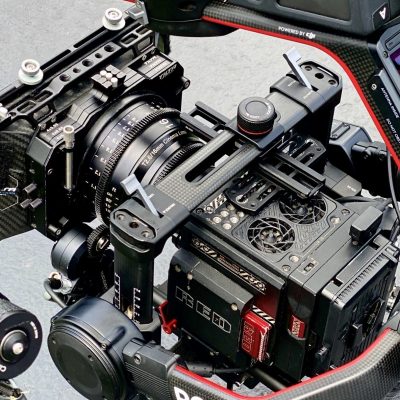
8K RED Helium DSMC2 Camera Package
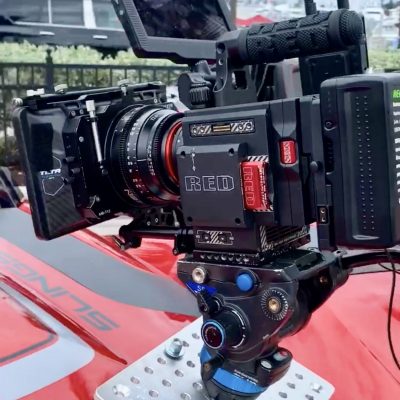
5K RED Gemini DSMC2 Camera Package
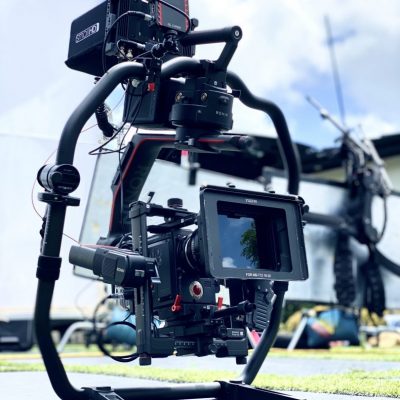
Ronin 2 (R2) Gimbal Camera Rig
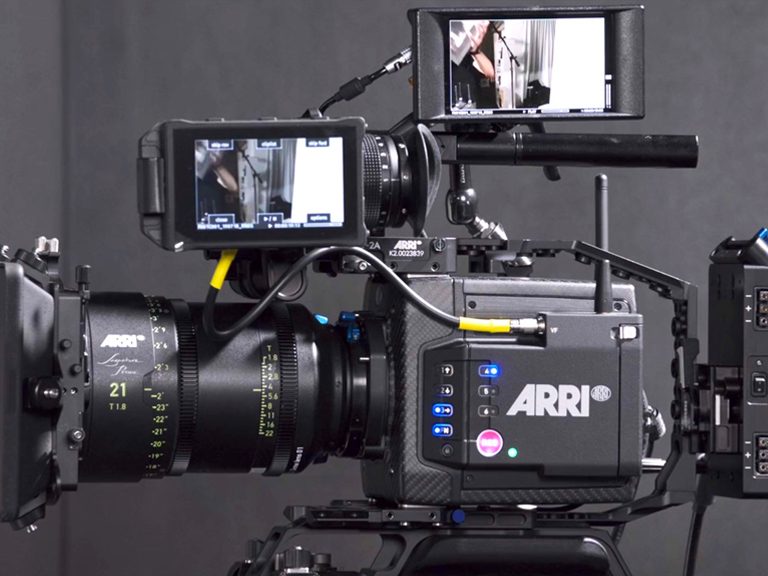
4k ARRI ALEXA MINI CAMERA PACKAGE
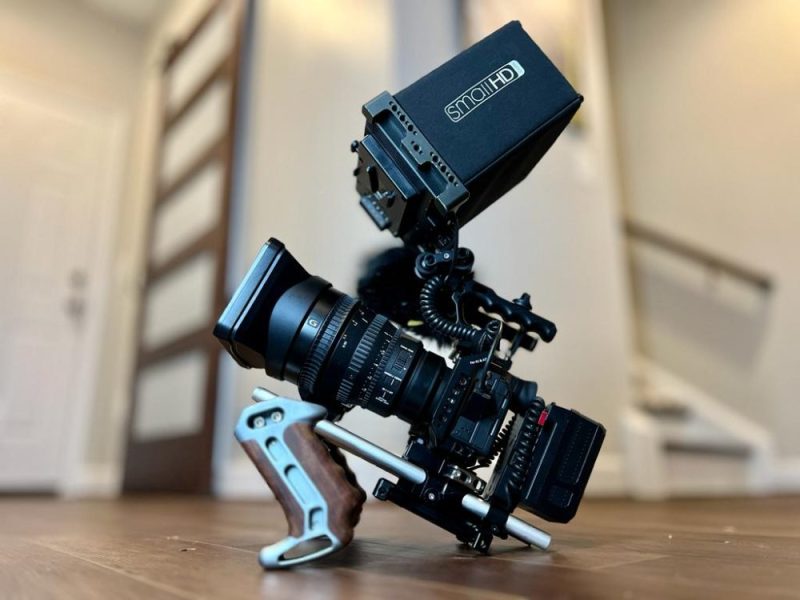
4K Sony A7s iii | CAMERA PACKAGEs
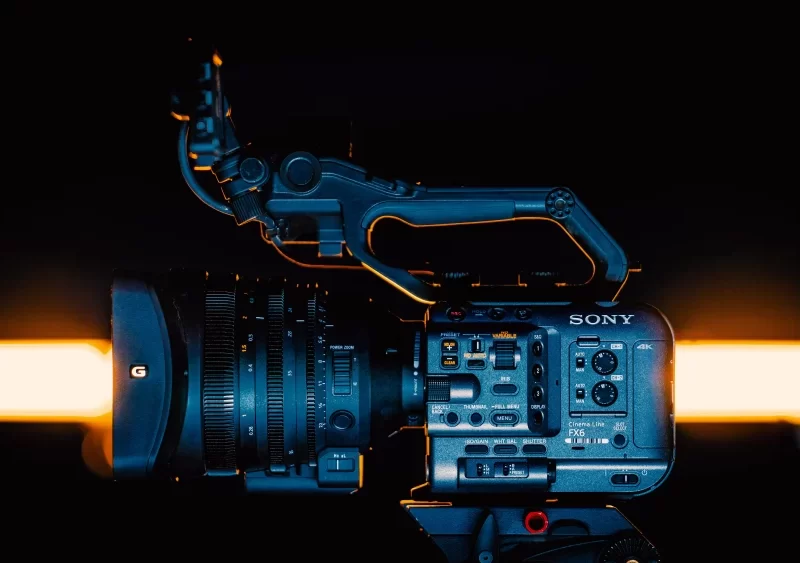
Sony FX 6 Full Frame Cinema | ENG CAMERA PACKAGEs
AERIAL DRONES & PILOT PACKAGES
Wireless Video Transmission & Video Village
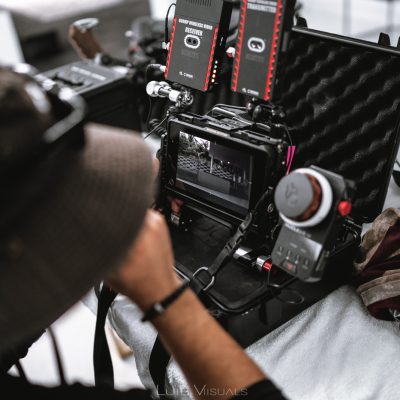
1ST AC WIRELESS UNIT
SmallHD Cine7 Monitor w/ RED & Alexa Remote Control. Tilta Nucleus M FF System.

DIRECTOR'S WIRELESS FIELD MONITOR
21`` Osee HDR+ 1500 Lumens Directors Monitor
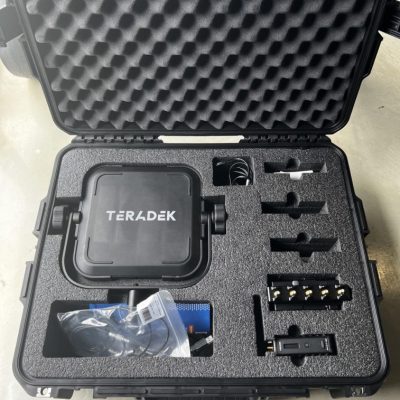
4K 1500 LT Teradeks Wireless Transmission
(2) Wireless Transmitter & Reciever

Chase Car with RED Camera Package
8K Helium| Ronin 2 | Dampening System
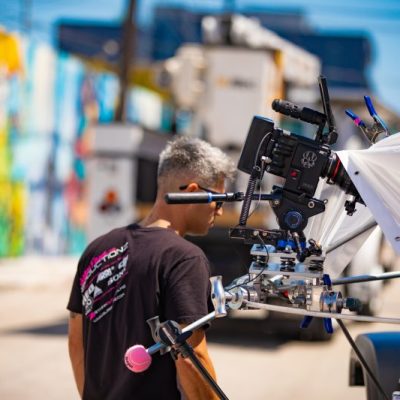
MATTHEWS VEHICLE CAR RIG
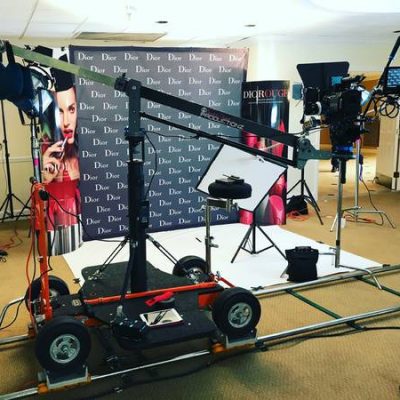
7ft Jib
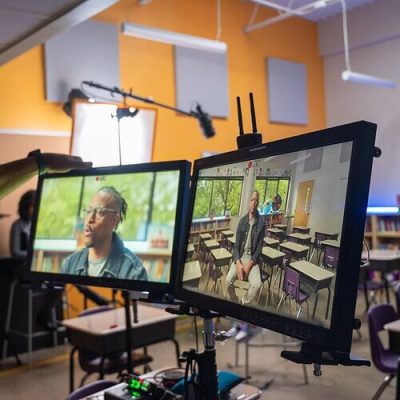
Wireless Client Video Village
(3) 12in Field Monitors + (3) Teradek Bolt 800 Transmission Kits
Servicing the following Areas:
DENVER / COLORADO
VAIL, ASPEN, BOULDER, BRECKENRIDGE, LAKEWOOD, COLORADO SPRINGS, DENVER
FOR PROJECT INQUIRIES PLEASE CLICK HERE!
Related Articles
Video / Film Production Company – Washington DC
Video / Film Production Company - Washington DC In the heart of the nation's capital, where history meets innovation, the power of visual storytelling is more essential than ever. Whether you're a business looking to engage your audience, an artist expressing
Video / Film Production Company – New York City
Video / Film Production Company - New York City In the bustling and culturally diverse city of New York City, where creativity thrives around every corner, the power of visual storytelling is undeniable. Whether you're a business looking to promote your




